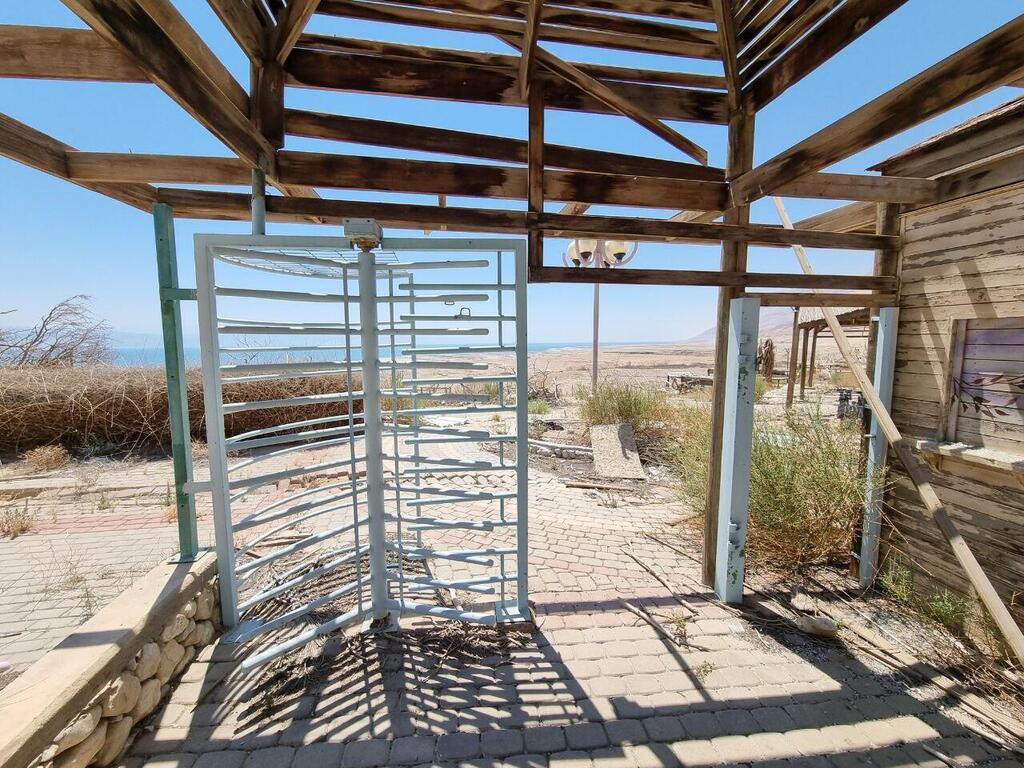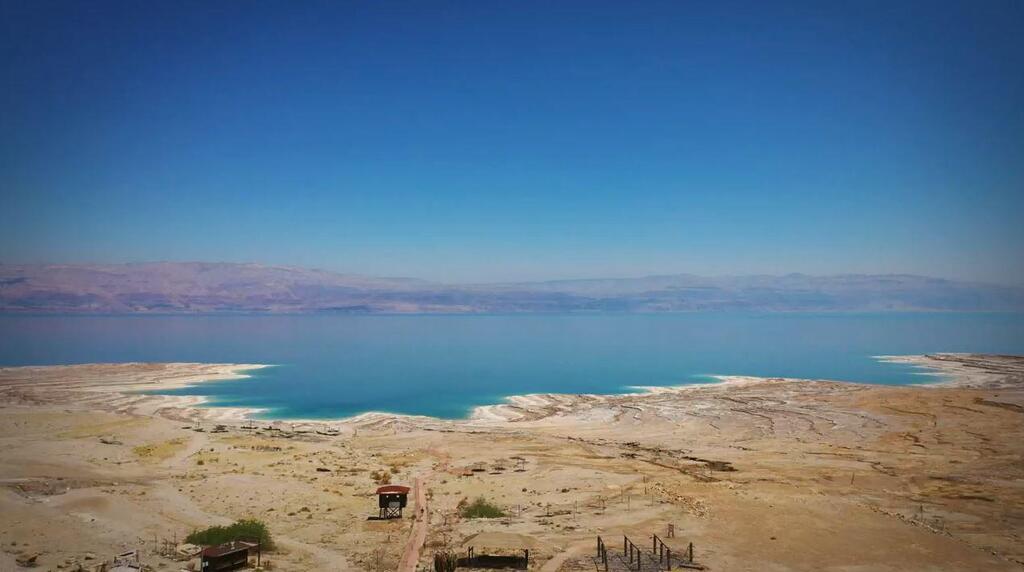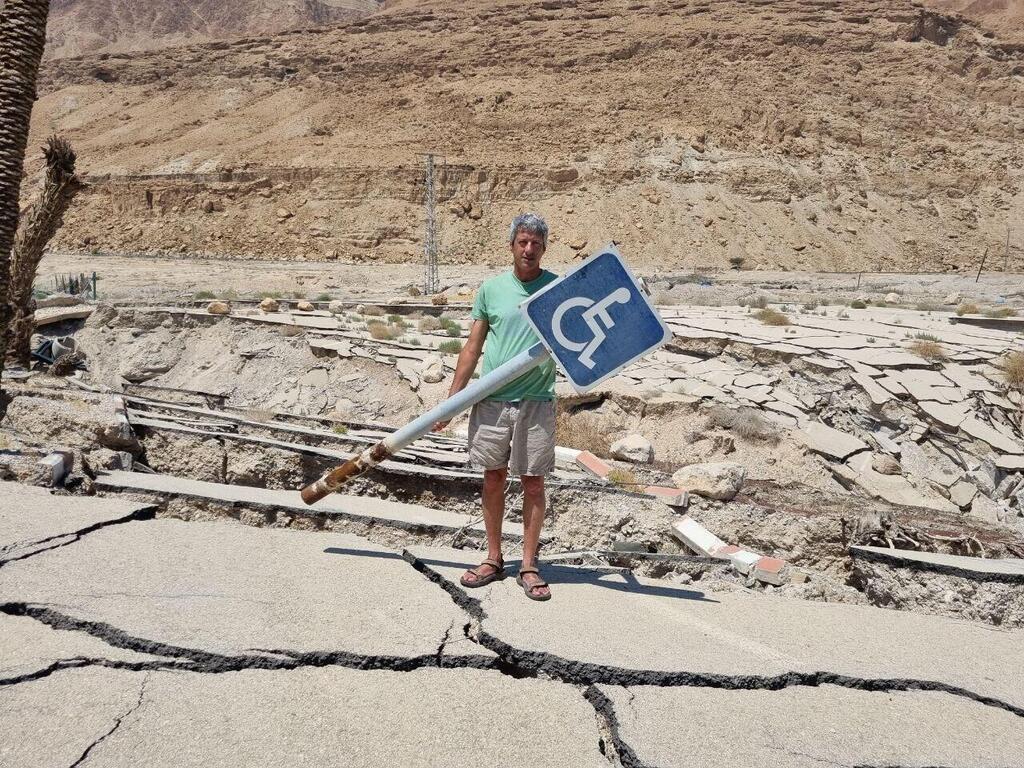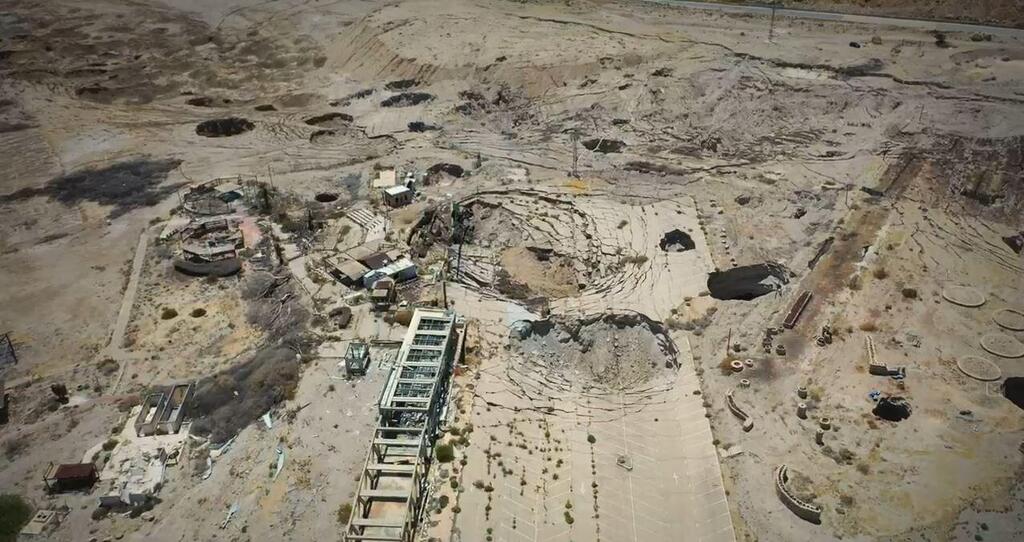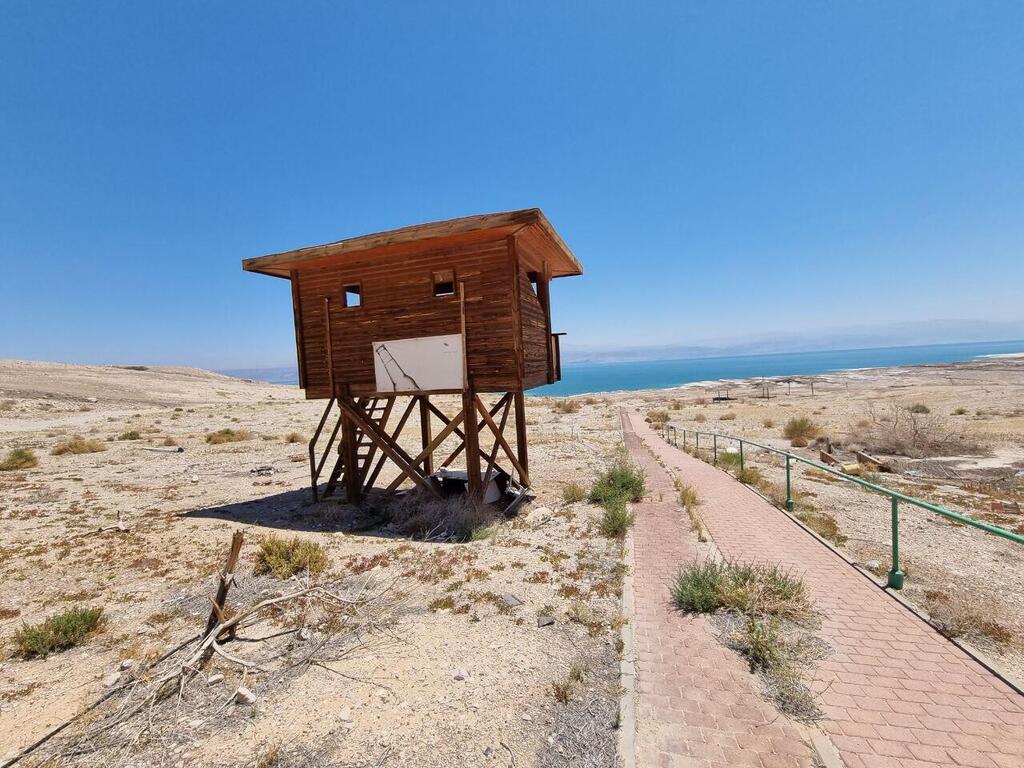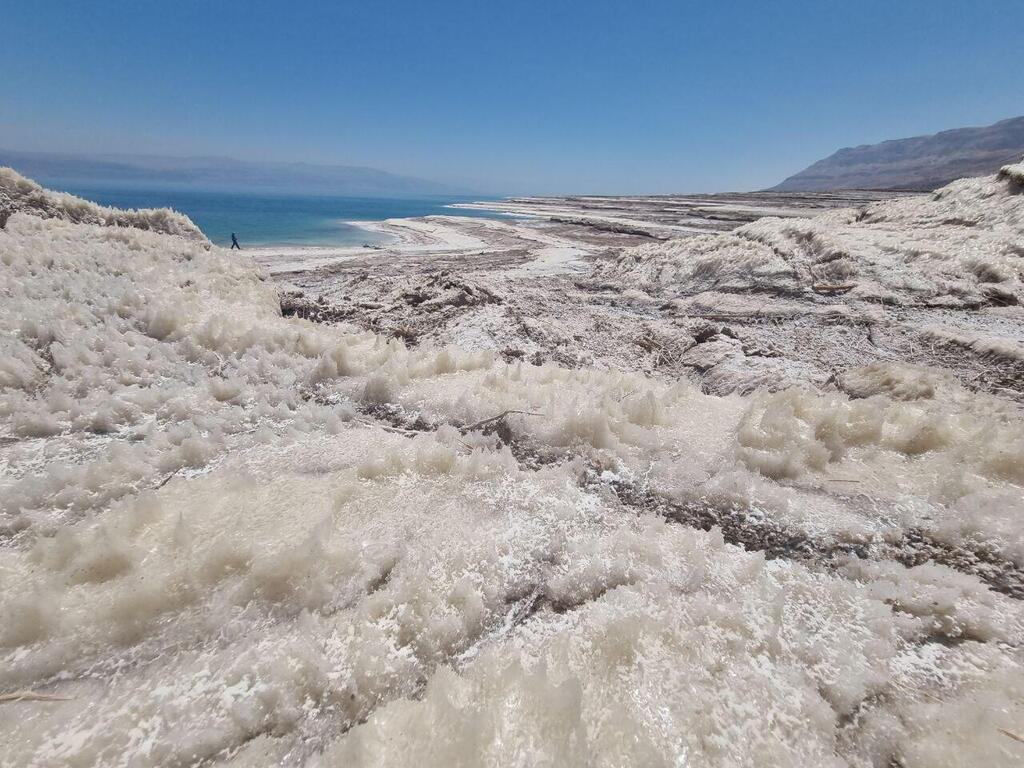Getting your Trinity Audio player ready...
Mineral Beach, a tourist spot spotted on the northern shores of the Dead Sea, was established in the early 1990s by members of Kibbutz Mitzpe Shalem.
More Stories:
The stunning beach, which was a central source of income for the kibbutz, incorporated high-end services, including a luxurious hot sulfur pool, a freshwater pool for toddlers, a spa, a restaurant, an upscale cosmetics store, and a well-maintained amphitheater for performances and events.
In 2014, a colossal sinkhole opened in the beach’s spacious parking lot. To prevent accidents, and to ensure the safety of visitors and the kibbutz's livelihood, a decision was made to immediately close the site.
In 2023, the abandoned and dusty Mineral Beach has become a prominent and disheartening symbol of the Dead Sea’s destruction, as well as Israel's mismanagement of the area.
To gain a close understanding of the tragic state of Mineral Beach, we asked Melvin Balau from Kibbutz Mitzpe Shalem, who had a deep connection to Mineral Beach, to guide us safely on a tour of this now hazardous area.
The eastern turn to the abandoned beach is blocked, and only an old and worn sign reminds people passing that this was once a bustling tourist hotspot.
Melvin, our local guide, leads us on a hidden off-road path, circumventing sinkholes and obstacles until we reach an elevated dirt mound that overlooks the deserted beach.
At the heart of the massive parking lot, which could accommodate dozens of buses in its heyday, a gigantic crater stands, swallowing chunks of asphalt, palm trees, various structures, and telephone poles. Our guide, Balau, is overwhelmed with emotion and nearly bursts into tears.
"This place was a paradise, one of the most beautiful places in Israel. Tens of thousands of Israelis would come to this beach every week. Many people worked here, and it was a major source of income for our kibbutz,” he explains.
“Unfortunately, after the sinkhole appeared, the kibbutz made the decision to close the beach. The ground swallowed everything. When I come here, I simply cry."
The emotional and disturbing tour of the abandoned Mineral Beach begins as we carefully follow our local guide, who leads us on a cautious path to the ruined parking lot.
The elongated cracks in the ground created by the sinkhole make walking difficult, and for personal safety, Balau insists that we walk only behind him. Up close, we notice other sinkholes filled with electricity poles, cobblestones, parking barriers, and dry palm trunks.
Balau points out the fissures in the ground, urging us to finish the passage along the sinkholes in the ruined parking lot. "I fear that the area we’re walking on will collapse in a few weeks," he says, pointing to an open sinkhole.
"The first sinkhole on Mineral Beach opened there. Everything sank. Over the years, more sinkholes emerged, and slowly but surely, cracks began to form that you can see deep into. It's a very dangerous area."
The ground beneath the famous "Ahava" Dead Sea cosmetic store vanished, replaced by a massive sinkhole. Balau warns us not to approach the abandoned building.
"Look down, you can see how the sinkhole dug underneath the building, it will collapse soon. This was caused by years of neglect. It's a crime committed by Israeli governments for generations. They talk a lot, but in reality, nothing is happening."
We carefully walk towards the abandoned beach entrance, near which stands a gate that surprisingly survived.
We continue towards Mineral Beach’s deserted amphitheater, which once housed thousands of Israelis attending spectacular shows by top Israeli artists.
"This is our amphitheater," he says, pointing to where seating and a central stage once stood in the building and saying the kibbutz used to even hold weddings there.
Balau leads us carefully through the ruins and pits towards the famous sulfur pool, which is now dry and filled with debris. Balau looks at the destruction and chokes on his words as he speaks.
"I see the pool and feel ruined, but we’re optimistic, even after this disaster. If we get help from the government, we’ll open a new and secure tourism area for both tourists and Israelis alike.”
Balau points to a lone palm tree that survived the catastrophe, and its green fronds stand in stark contrast to the endless grayish-yellow color that surrounds us.
"I always search for hope. Look at this palm tree, that lacks everything and thrives, continuing to live solely from rainwater, and even has sprouts that continue to grow as well.”
It's hard to ignore the breathtaking view of the Dead Sea, which has by now receded from the original shoreline. To reach the waterline, one must tread hundreds of meters on dry land filled with chunks of salt.
On the deserted Mineral Beach, it's easy to see the ecological ruin brought on by the drying of the Dead Sea. Balau sadly points to three different lifeguard stations and rows of decaying beach umbrellas and showers. "There used to be water where we’re standing in the 1990s. The sea disappeared."
We begin a long walk toward the waterline. The ground is full of pits and salt chunks, and it's hard not to think about the abandoned state we leave the Dead Sea in for future generations.
The Dead Sea's drying process is a long one, mostly caused by human activities, like the construction of dams on the Jordan River, blocking the water from flowing and replenishing the Dead Sea to compensate for its natural evaporation process.
The second reason for the Dead Sea drying is the destructive activity of industry and factories that drain the southern part of the sea for their own needs. In addition, the decrease in the Dead Sea's water level causes the flow of sweet underground water, dissolving the subterranean salt layer and creating dangerous sinkholes.
All of these actions were approved and facilitated by the different Israeli governments for not much more than greed, which – should things continue – may lead to future generations not knowing about one of the world’s wonders.
After walking in silence for a while, we reach the waterline. Balau is visibly angry, "Look at the beauty of nature. It’s our mistake that lasted generations that are destroying the Dead Sea. There are solutions that we must implement to save it, for the sake of our grandchildren.”


